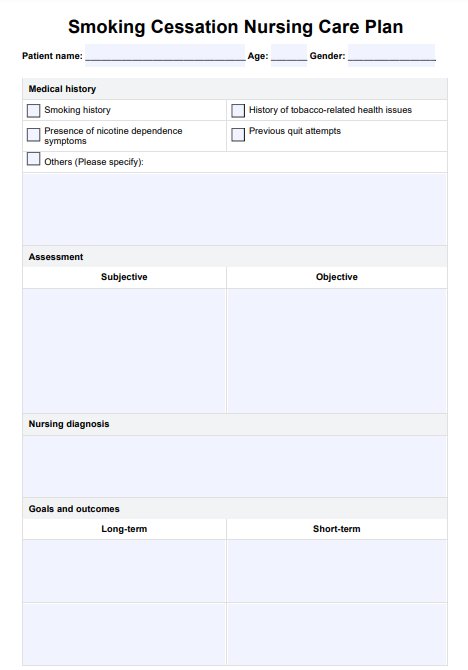Smoking cessation interventions vary widely and can include behavioral therapy, medication, and support programs. Evidence from randomized clinical trials shows that intensive interventions are often more effective in helping people quit smoking compared to standard methods.

Smoking Cessation Nursing Care Plan
Explore our Smoking Cessation Nursing Care Plan Template, designed to assist in quitting smoking with assessment, planning, and care steps for individual needs.
Smoking Cessation Nursing Care Plan Template
Commonly asked questions
Incorporating a relapse prevention intervention into your smoking cessation plan can help manage potential setbacks. It's important to identify triggers related to your smoking habits and develop strategies to cope with them.
Smoking cessation interventions varied based on the patient's needs. Nursing interventions often include counseling, education, nicotine replacement therapy, and support to encourage tobacco users to quit. These smoking cessation components are essential for improving cardiovascular health and preventing disease.
EHR and practice management software
Get started for free
*No credit card required
Free
$0/usd
Unlimited clients
Telehealth
1GB of storage
Client portal text
Automated billing and online payments











